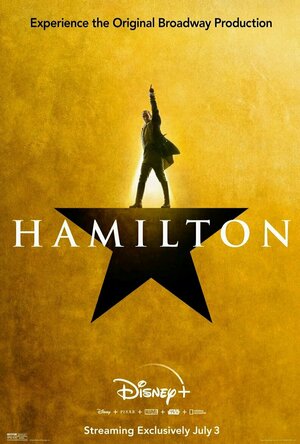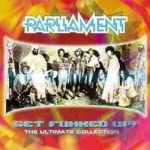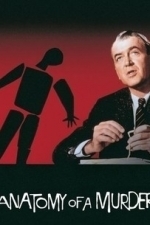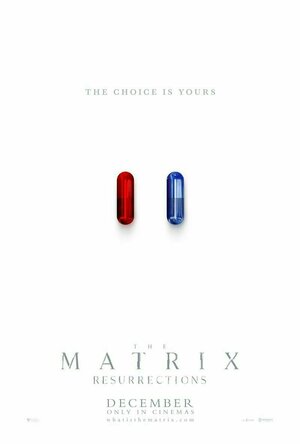Search
Search results
Chris Hooker (419 KP) rated The Disease in Books
Jan 12, 2018
[The Disease] by [George Hamilton] was a medical thriller that pits government loyalty versus the good of humanity. I would like to say this was a post apocalyptic story but sadly I can see events like this being possible today.
The characters of Olga and Ludmilla face choices that will not only affect them but possibly the entire world. The setting is an Eastern European nation while a pandemic rages. Ludmilla is a doctor and "Daughter of the Nation", while Olga her daughter is a dissident. Who can be trusted and what is the right choice are themes throughout this novel.
The characters of Olga and Ludmilla face choices that will not only affect them but possibly the entire world. The setting is an Eastern European nation while a pandemic rages. Ludmilla is a doctor and "Daughter of the Nation", while Olga her daughter is a dissident. Who can be trusted and what is the right choice are themes throughout this novel.
BankofMarquis (1832 KP) rated Hamilton (2020) in Movies
Jul 5, 2020
Captures the power of being in "the room where it happens"
I'll just cut to the chase, the filmed version of the mega-hit stage musical HAMILTON (now streaming on Disney+) is terrific. If you are one of the few that have not seen this, check it out - you'll be glad you did.
I could go on and on about the Pulitzer-Prize winning show, the script, the music, the performances and/or the cross-cultural casting - all of which works to perfection, but what separates this film from the other hit Broadway shows that are converted to film is how well that the filmmakers were able to translate the power of being inside the theater during a live performance of this show.
Credit, of course, needs to go to the visionaries responsible for this show, creator/writer/star Lin-Manuel Miranda and Director Thomas Kail. They realized pretty early on (when the show was becoming the phenomenon that it has become) that they wanted to preserve this event for future generations, so started making plans to film the show - in High Def - with an audience and without an audience (for close-ups). In June 2016, about a month before the original cast started leaving the show (and right after the show won 11 Tony Awards), they spent $10 million to capture the show - with live audiences on Sunday and Tuesday and then spent the rest of Sunday night and all day Monday doing close-ups and crane shots to augment the action.
The results are outstanding. The wide-shots show the breadth of the production - showing the strong, Tony Award winning choreography by Andy Blankenbuehler, the unique, minimal and highly versatile set, the Tony Award winning costumes by Paul Tazewell and the Lighting Design that earned Howell Blinkley a Tony. All of these are showcased in this film - special note should be made about the Lighting that needed to be tweaked on the spot for the filming.
As for the close-ups, they showcase the wry smile and comedic delight that Tony winner Daveed Diggs shows in his roles as Lafayette/Jefferson, the power and sorrow of Tony Award winner Renee Elise Goldsberry - her spotlight number SATISFIED is as "perfect" a musical number as you will ever see. The powerful acting of Leslie Odom, Jr. as Aaron Burr (who won the Tony as Best Actor over Lin-Manuel's performance as Hamilton) as well as terrific supporting turns by the likes of Anthony Ramos (Lawrence/Phillip), Chris Jackson (showing real leadership as George Washington) and Okieriete Onaodwoan as Hercules Mulligan (one of my absolute favorite characters in this show)./James Madison.
Special note should be made to Jonathan Groff's portrayal of King George III - it is, basically, a cameo role, but he is filmed with such tight close-ups (showing spittle rolling down has chin as he sings) that marvelously juxtaposes King George's real emotions with that of the words he is speaking.
But, of course, the real star is Lin-Manuel Miranda - the genius creative force behind Hamilton. Interestingly enough, I thought his performance was the weakest of the lead cast (don't get me wrong, he was still excellent - just not "as excellent" as some of the others). His true vision, of course, was to tell the story of "the people of that era" as told by "the people of our era".
That is the true genius of Hamilton.
Letter Grade: A+
10 stars out of 10 (can I turn this up to 11)?
I could go on and on about the Pulitzer-Prize winning show, the script, the music, the performances and/or the cross-cultural casting - all of which works to perfection, but what separates this film from the other hit Broadway shows that are converted to film is how well that the filmmakers were able to translate the power of being inside the theater during a live performance of this show.
Credit, of course, needs to go to the visionaries responsible for this show, creator/writer/star Lin-Manuel Miranda and Director Thomas Kail. They realized pretty early on (when the show was becoming the phenomenon that it has become) that they wanted to preserve this event for future generations, so started making plans to film the show - in High Def - with an audience and without an audience (for close-ups). In June 2016, about a month before the original cast started leaving the show (and right after the show won 11 Tony Awards), they spent $10 million to capture the show - with live audiences on Sunday and Tuesday and then spent the rest of Sunday night and all day Monday doing close-ups and crane shots to augment the action.
The results are outstanding. The wide-shots show the breadth of the production - showing the strong, Tony Award winning choreography by Andy Blankenbuehler, the unique, minimal and highly versatile set, the Tony Award winning costumes by Paul Tazewell and the Lighting Design that earned Howell Blinkley a Tony. All of these are showcased in this film - special note should be made about the Lighting that needed to be tweaked on the spot for the filming.
As for the close-ups, they showcase the wry smile and comedic delight that Tony winner Daveed Diggs shows in his roles as Lafayette/Jefferson, the power and sorrow of Tony Award winner Renee Elise Goldsberry - her spotlight number SATISFIED is as "perfect" a musical number as you will ever see. The powerful acting of Leslie Odom, Jr. as Aaron Burr (who won the Tony as Best Actor over Lin-Manuel's performance as Hamilton) as well as terrific supporting turns by the likes of Anthony Ramos (Lawrence/Phillip), Chris Jackson (showing real leadership as George Washington) and Okieriete Onaodwoan as Hercules Mulligan (one of my absolute favorite characters in this show)./James Madison.
Special note should be made to Jonathan Groff's portrayal of King George III - it is, basically, a cameo role, but he is filmed with such tight close-ups (showing spittle rolling down has chin as he sings) that marvelously juxtaposes King George's real emotions with that of the words he is speaking.
But, of course, the real star is Lin-Manuel Miranda - the genius creative force behind Hamilton. Interestingly enough, I thought his performance was the weakest of the lead cast (don't get me wrong, he was still excellent - just not "as excellent" as some of the others). His true vision, of course, was to tell the story of "the people of that era" as told by "the people of our era".
That is the true genius of Hamilton.
Letter Grade: A+
10 stars out of 10 (can I turn this up to 11)?
David Byrne recommended track Give Up the Funk (Tear the Roof off the Sucker) by Parliament in Get Funked Up!: The Ultimate Collection by Parliament in Music (curated)
Robert Englund recommended Anatomy of a Murder (1959) in Movies (curated)
BankofMarquis (1832 KP) rated The Matrix Resurrections (2021) in Movies
Dec 31, 2021
Unnecessary
And now from the unnecessary sequels department…
And, that, pretty much sums up THE MATRIX RESURRECTIONS - a title that is a confession of a studio and creator that is looking to milk a few more bucks out of a dormant franchise.
Written and Directed by Lana Wachowski (one of the creators/directors of the original Matrix trilogy), MATRIX RESURRECTIONS drops us back into the Matrix that is the same, yet different, and - intriguingly enough - brings us back to Neo and Trinity, 2 characters that died in the 3rd film.
Of course, this being Science Fiction/Fantasy, no one needs to stay dead, if another story can be built around them.
Keanu Reeves and Carrie-Anne Moss are back as Neo & Trinity (this film would not have happened if they didn’t say yes to this) - and they are the best thing in this film. Their chemistry is strong and any film that can bring back Carrie-Anne Moss as a lead in a film, is okay by me.
The best newcomer in this film is Jonathan Groff as “Agent Smith” (Hugo Weaving was set to reprise his role, but had to drop out due to Theater Commitments). Groff channels his inner “King George” (the character that he was Tony Nominated for in the Stage Musical Hamilton) and it works well in this film.
As for the other “character/actors” - like the characters that Jada Pinkett-Smith (the only other returning actor from the original trilogy), Yahya Abdbul-Mateen II (playing a version of Morpheus), Thelma Hopkins, Jessica Henwick and…yes that IS Cristina Ricci - they are all pretty generic and serve as plot machinations to get us from one action set piece to another.
And, of course, there is Neil Patrick Harris as “THE ANALYST”, it’s an interesting, pivotal, role in this film and would have been better served being played by someone less “well known”. All I kept thinking as I watched this performance was - “it’s evil Neil Patrick Harris”!
As for the special effects/set pieces, they are “fine” but nothing “special”. The first Matrix film was a brilliant, groundbreaking and mind-bending piece of filmmaking that introduced cinema (for good or ill) to “bullet time” - a Special F/X that has been en vogue ever since. But this film is just a mismash of CGI that is neither brilliant nor groundbreaking and the dense mythology plot of this film is not “mind-bending”, it is more like “headache-inducing”.
Do yourself a favor and skip the Resurrection of The Matrix and, instead, check out the brilliant 1999 original - it holds up well (and is the subject of my January podcast).
Letter Grade: B- (thanks to Reeves, Moss and Groff)
6 Stars (out of 10) and you can take that to the Bank(ofMarquis)
And, that, pretty much sums up THE MATRIX RESURRECTIONS - a title that is a confession of a studio and creator that is looking to milk a few more bucks out of a dormant franchise.
Written and Directed by Lana Wachowski (one of the creators/directors of the original Matrix trilogy), MATRIX RESURRECTIONS drops us back into the Matrix that is the same, yet different, and - intriguingly enough - brings us back to Neo and Trinity, 2 characters that died in the 3rd film.
Of course, this being Science Fiction/Fantasy, no one needs to stay dead, if another story can be built around them.
Keanu Reeves and Carrie-Anne Moss are back as Neo & Trinity (this film would not have happened if they didn’t say yes to this) - and they are the best thing in this film. Their chemistry is strong and any film that can bring back Carrie-Anne Moss as a lead in a film, is okay by me.
The best newcomer in this film is Jonathan Groff as “Agent Smith” (Hugo Weaving was set to reprise his role, but had to drop out due to Theater Commitments). Groff channels his inner “King George” (the character that he was Tony Nominated for in the Stage Musical Hamilton) and it works well in this film.
As for the other “character/actors” - like the characters that Jada Pinkett-Smith (the only other returning actor from the original trilogy), Yahya Abdbul-Mateen II (playing a version of Morpheus), Thelma Hopkins, Jessica Henwick and…yes that IS Cristina Ricci - they are all pretty generic and serve as plot machinations to get us from one action set piece to another.
And, of course, there is Neil Patrick Harris as “THE ANALYST”, it’s an interesting, pivotal, role in this film and would have been better served being played by someone less “well known”. All I kept thinking as I watched this performance was - “it’s evil Neil Patrick Harris”!
As for the special effects/set pieces, they are “fine” but nothing “special”. The first Matrix film was a brilliant, groundbreaking and mind-bending piece of filmmaking that introduced cinema (for good or ill) to “bullet time” - a Special F/X that has been en vogue ever since. But this film is just a mismash of CGI that is neither brilliant nor groundbreaking and the dense mythology plot of this film is not “mind-bending”, it is more like “headache-inducing”.
Do yourself a favor and skip the Resurrection of The Matrix and, instead, check out the brilliant 1999 original - it holds up well (and is the subject of my January podcast).
Letter Grade: B- (thanks to Reeves, Moss and Groff)
6 Stars (out of 10) and you can take that to the Bank(ofMarquis)
BankofMarquis (1832 KP) rated Anatomy of a Murder (1959) in Movies
Nov 30, 2018
One of the Best Courtroom Dramas of all Time
I have to admit, that (at times) the fun part of going to "SECRET MOVIE NIGHT" is the anticipation of not knowing what the film is. Sometimes the film is "good, not great" (like THE BLUES BROTHERS, BODY HEAT and A FACE IN THE CROWD) and other times it is a CLASSIC (Like CITIZEN KANE, THE APARTMENT and NETWORK). I am happy to report that this month's installment IS a classic, our old pal Jimmy Stewart in 1959's ANATOMY OF MURDER.
Directed by the great Otto Preminger, AOM is often referred to as the finest courtroom drama ever filmed. While I need to give that some thought, I will say AOM is right up there as one of the finest examples of a courtroom drama.
Starring Jimmy Stewart as "country lawyer" Paul Biegler, who is brought in to defend Army Lieutenant Manion (Ben Gazzara). Manion is accused of murdering a man that raped his wife (Lee Remick). The central mystery isn't "did Manion kill the man" (he did), it is more of "did he kill his wife's rapist or lover" and "will Biegler get away with the temporary insanity plea".
This is the kind of plot that we've all seen a dozen times on standard TV shows, but back in 1959, this type of film - and trial - was quite new and fresh and this film was "scandalous" in it's use of frank language. Remember, this is 1959 in Eisenhower "Happy Days" Americana, so hearing words like "bitch, panties, penetration, slut, sperm, bitch and slut" was quite shocking and led to many protests of the film.
Those who were turned off by the language and frankhandling of the subject matter lost out on an intriguing, well-acted, well-written and well-directed courtroom drama, where the verdict is up in the air right up until the foreman of the jury says "We, the jury, find the defendant..."
Jimmy Stewart is perfectly cast in the lead role of Defense Attorney, Biegler. Stewart brings an instant likableness and every man integrity quality to the role. His Attorney is down-to-earth but whip-smart, able to crack a joke to lighten the mood or explode in rage at an affront at a moment's notice. He goes toe-to-toe with Prosecuting Attorney Claude Dancer (a VERY young George C. Scott). Dancer is everything that Biegler is not, crisp, well-polished and arrogant. While it would have been very easy to paint these two characters as good (Stewart) and bad (Scott), Director Preminger and screenwriter Wendell Mayes shy away from this and show these two as fierce competitors playing a very serious game of chess - and this works very well, indeed. Both Stewart and Scott were nominated for Oscars for their work as Best Actor and Supporting Actor respectively.
The Supporting cast is superb, featuring such 1950's/early 1960's stalwarts as Arthur O'Connell (also Oscar nominated as Stewarts's alcoholic law mentor), the always good Eve Arden, Orson Bean and Katherine Grant. It also features three character actors in small roles (witnesses in the trial) who you would recognize from other things - Murray Hamilton (the Mayor in Jaws), Howard McNear (Floyd the Barber from Mayberry) and Joseph Kearns (Mr. Wilson in Dennis the Menace).
Special notice needs to be made for Lee Remick as the sultry and flirtatious woman at the core of the film. Remick is superb in this role, and that is fortunate, for if she wasn't believable in the "would she or won't she" role that she is asked to play, then the film could have easily fallen apart. But the real bright spot in this film is the scene stealing Joseph N. Welch as the Judge in the case. His performance as the judge is the perfect "third leg" to the Stewart/Scott stool, balancing charm, folksiness and strength in even portions (depending on what is needed to balance the other two).
Otto Preminger (LAURA, STALAG 17) is a Director who's name is beginning to fade into the dust of the past - and that's too bad, for he is a strong director who knows how to frame a scene and pace a film. Even though AOM is 2 hours and 40 minutes of talking, it never feels long or slow.
Two other aspects of this film need to be mentioned - the "jazz" score by the great Duke Ellington (which won a grammy) is perfectly suited to the themes and mood of this film and the opening title sequence (and movie poster) is reminiscent of an Alfred Hitchock film - and that is because they are done by frequent Hitchock contributor Saul Bass.
Nominated for 7 Oscars (it won zero, falling to the juggernaut that was BEN HUR that year), ANATOMY OF A MURDER is an intriguing courtroom drama that also opens the door to performers of the past. Well worth the time investment, should you run across it (it is frequently shown on TCM).
Letter Grade: A
9 (out of 10) stars and you can take that to the Bank(ofMarquis)
Directed by the great Otto Preminger, AOM is often referred to as the finest courtroom drama ever filmed. While I need to give that some thought, I will say AOM is right up there as one of the finest examples of a courtroom drama.
Starring Jimmy Stewart as "country lawyer" Paul Biegler, who is brought in to defend Army Lieutenant Manion (Ben Gazzara). Manion is accused of murdering a man that raped his wife (Lee Remick). The central mystery isn't "did Manion kill the man" (he did), it is more of "did he kill his wife's rapist or lover" and "will Biegler get away with the temporary insanity plea".
This is the kind of plot that we've all seen a dozen times on standard TV shows, but back in 1959, this type of film - and trial - was quite new and fresh and this film was "scandalous" in it's use of frank language. Remember, this is 1959 in Eisenhower "Happy Days" Americana, so hearing words like "bitch, panties, penetration, slut, sperm, bitch and slut" was quite shocking and led to many protests of the film.
Those who were turned off by the language and frankhandling of the subject matter lost out on an intriguing, well-acted, well-written and well-directed courtroom drama, where the verdict is up in the air right up until the foreman of the jury says "We, the jury, find the defendant..."
Jimmy Stewart is perfectly cast in the lead role of Defense Attorney, Biegler. Stewart brings an instant likableness and every man integrity quality to the role. His Attorney is down-to-earth but whip-smart, able to crack a joke to lighten the mood or explode in rage at an affront at a moment's notice. He goes toe-to-toe with Prosecuting Attorney Claude Dancer (a VERY young George C. Scott). Dancer is everything that Biegler is not, crisp, well-polished and arrogant. While it would have been very easy to paint these two characters as good (Stewart) and bad (Scott), Director Preminger and screenwriter Wendell Mayes shy away from this and show these two as fierce competitors playing a very serious game of chess - and this works very well, indeed. Both Stewart and Scott were nominated for Oscars for their work as Best Actor and Supporting Actor respectively.
The Supporting cast is superb, featuring such 1950's/early 1960's stalwarts as Arthur O'Connell (also Oscar nominated as Stewarts's alcoholic law mentor), the always good Eve Arden, Orson Bean and Katherine Grant. It also features three character actors in small roles (witnesses in the trial) who you would recognize from other things - Murray Hamilton (the Mayor in Jaws), Howard McNear (Floyd the Barber from Mayberry) and Joseph Kearns (Mr. Wilson in Dennis the Menace).
Special notice needs to be made for Lee Remick as the sultry and flirtatious woman at the core of the film. Remick is superb in this role, and that is fortunate, for if she wasn't believable in the "would she or won't she" role that she is asked to play, then the film could have easily fallen apart. But the real bright spot in this film is the scene stealing Joseph N. Welch as the Judge in the case. His performance as the judge is the perfect "third leg" to the Stewart/Scott stool, balancing charm, folksiness and strength in even portions (depending on what is needed to balance the other two).
Otto Preminger (LAURA, STALAG 17) is a Director who's name is beginning to fade into the dust of the past - and that's too bad, for he is a strong director who knows how to frame a scene and pace a film. Even though AOM is 2 hours and 40 minutes of talking, it never feels long or slow.
Two other aspects of this film need to be mentioned - the "jazz" score by the great Duke Ellington (which won a grammy) is perfectly suited to the themes and mood of this film and the opening title sequence (and movie poster) is reminiscent of an Alfred Hitchock film - and that is because they are done by frequent Hitchock contributor Saul Bass.
Nominated for 7 Oscars (it won zero, falling to the juggernaut that was BEN HUR that year), ANATOMY OF A MURDER is an intriguing courtroom drama that also opens the door to performers of the past. Well worth the time investment, should you run across it (it is frequently shown on TCM).
Letter Grade: A
9 (out of 10) stars and you can take that to the Bank(ofMarquis)




